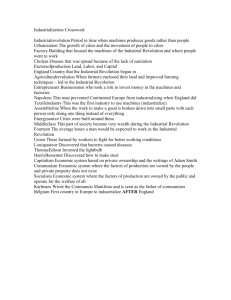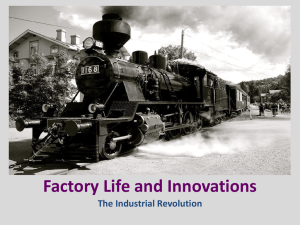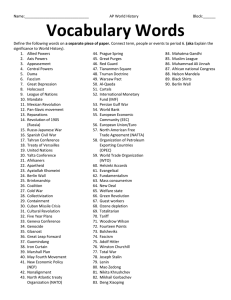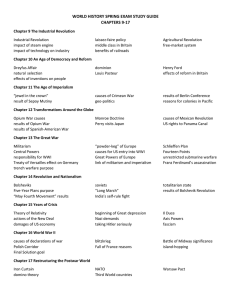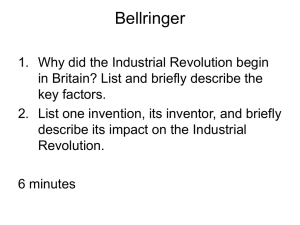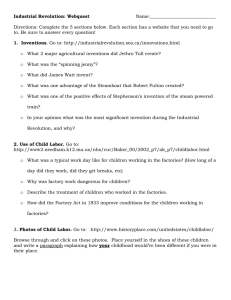World Civilization
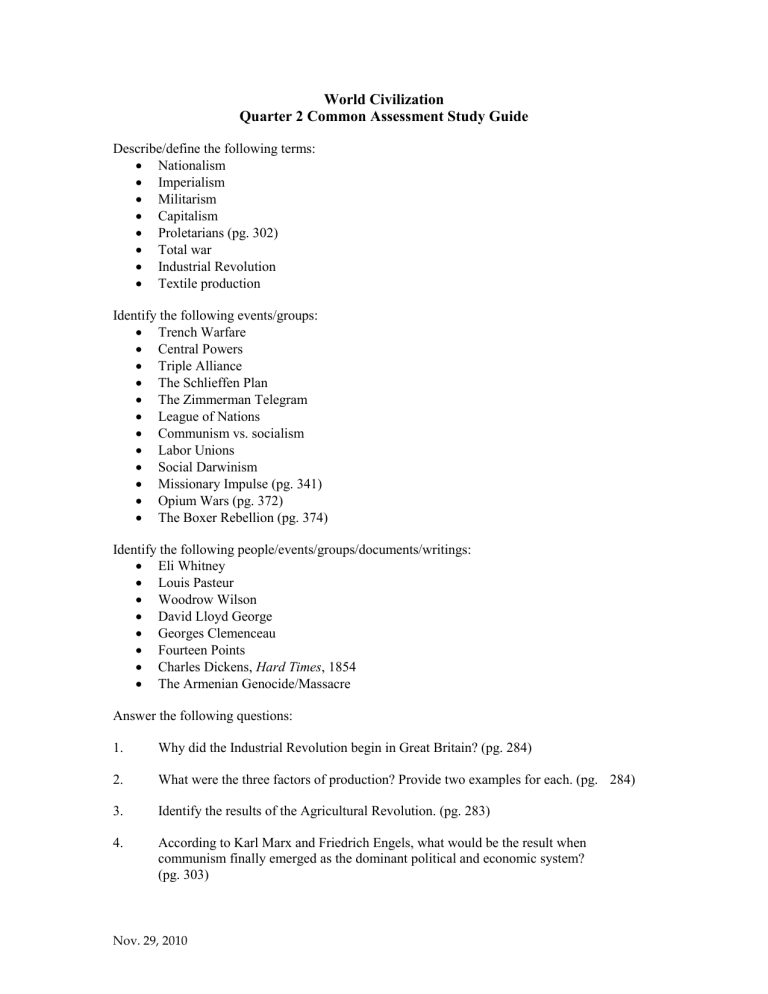
World Civilization
Quarter 2 Common Assessment Study Guide
4.
2.
3.
Describe/define the following terms:
Nationalism
Imperialism
Militarism
Capitalism
Proletarians (pg. 302)
Total war
Industrial Revolution
Textile production
Identify the following events/groups:
Trench Warfare
Central Powers
Triple Alliance
The Schlieffen Plan
The Zimmerman Telegram
League of Nations
Communism vs. socialism
Labor Unions
Social Darwinism
Missionary Impulse (pg. 341)
Opium Wars (pg. 372)
The Boxer Rebellion (pg. 374)
Identify the following people/events/groups/documents/writings:
Eli Whitney
Louis Pasteur
Woodrow Wilson
David Lloyd George
Georges Clemenceau
Fourteen Points
Charles Dickens, Hard Times , 1854
The Armenian Genocide/Massacre
Answer the following questions:
1.
Why did the Industrial Revolution begin in Great Britain? (pg. 284)
What were the three factors of production? Provide two examples for each. (pg. 284)
Identify the results of the Agricultural Revolution. (pg. 283)
According to Karl Marx and Friedrich Engels, what would be the result when communism finally emerged as the dominant political and economic system?
(pg. 303)
Nov. 29, 2010
5.
Describe some of the harsh conditions of factories during the Industrial Revolution.
(pg. 291)
6.
What was the major difference between men and women working in American factories? (pg. 305)
7.
Identify the long-term effects of the Industrial Revolution. (pg. 292)
8.
Describe the meaning of “The sun never sets on the British Empire.” (pg. 367)
9.
How did European nations view their colonies as of the 1800’s? (pg. 339)
10.
What were the results of increased contact between Europe and the continents of Asia,
Africa, and South America? (pg. 350)
11.
What made India economically valuable to Britain? (pg. 358)
12.
What was the British purpose for trading opium to China? (pg. 372)
13.
In what ways had Japan changed after being ‘opened’ by the United States? (pg. 376-9)
14.
What factors or “ism’s” led up to World War I? (pg. 407-8)
15.
Why was the Balkans referred to as the “Powder Keg” of Europe? (pg. 409)
16.
Which country declared war first in World War I? (pg. 410)
17.
Why was the Triple Entente formed in 1907? (pg. 409)
18.
Who gained victory in the First Battle of the Marne? What was the importance of this battle? (pg. 412-3)
19.
Why did the U.S. never become members of the League of Nations? (pg. 425 - 427)
20.
What were the provisions of the Treaty of Versailles? (pg. 427)
21.
How did U.S. entrance into World War I affect the outcome of the war? (pg. 421)
22.
Explain the artistic movements from romanticism to realism and impressionism. (pg.
264-267)
23. Using the anti-Germany war poster on pg. 429, which of the following best describes the depiction of the German soldiers? (pg. 429)
Nov. 29, 2010


